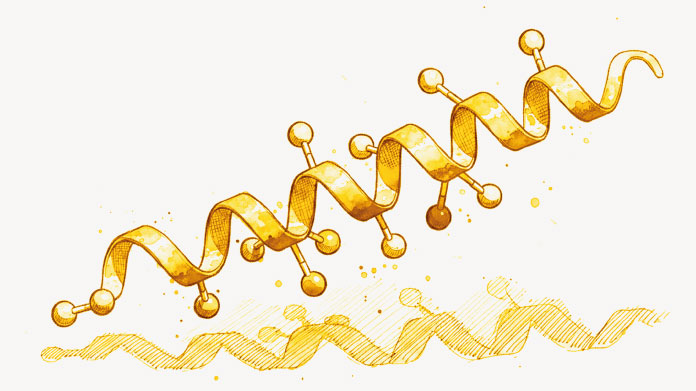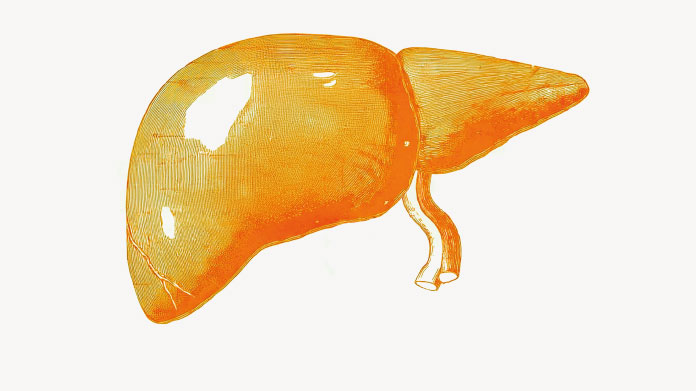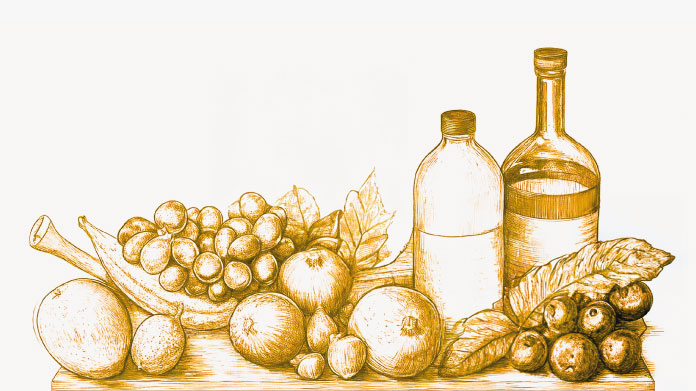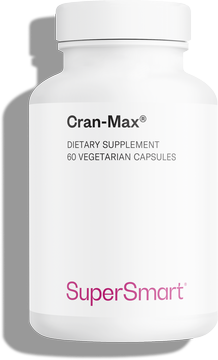Dangerous additives: which food colors and preservatives should you avoid?
Sweets are an obvious example of a product containing food additives – but there’s often nothing ‘sweet’ about these sometimes controversial ingredients. Let’s take a look at the food colors, preservatives and other undesirable substances we’d do well to avoid.
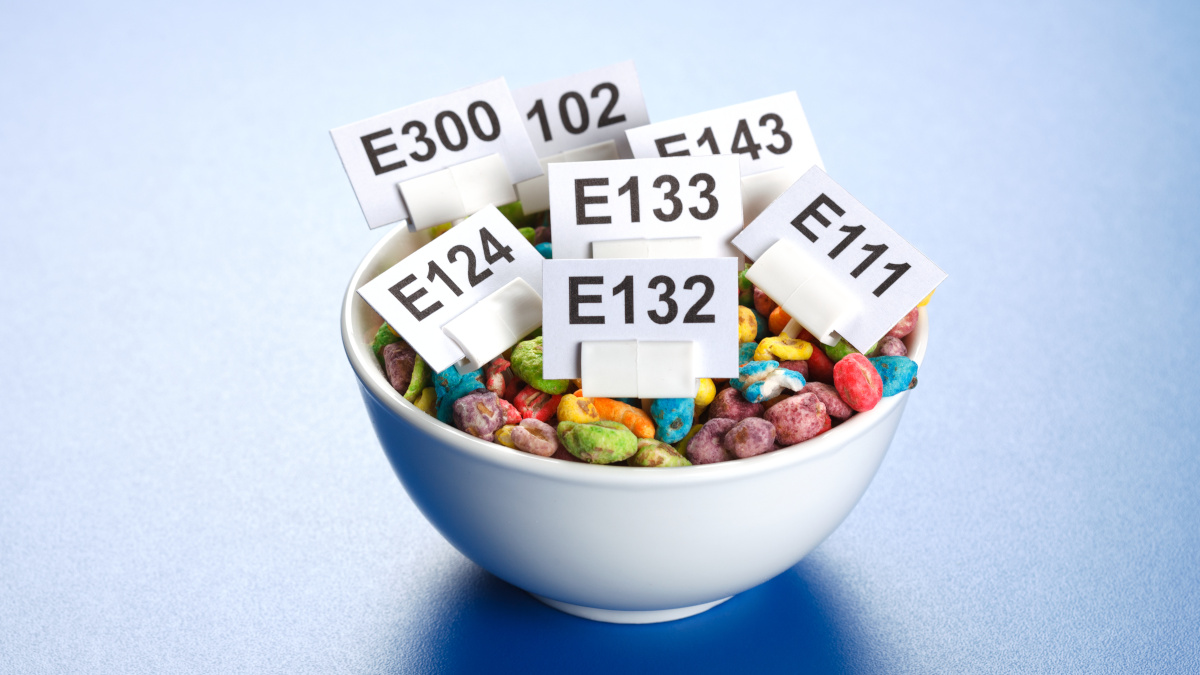
What exactly are food additives?
Food additives are natural or synthetic substancesadded to a product to improve its appearance, texture or preservation. They appear on food labels either as full names or code names (which always begin with the letter E) accompanied by their function in the product.
An example? On your favorite soup packet, glutamate is identifiable by the description ‘flavor-enhancer: monosodium glutamate‘ or ‘flavor-enhancer: E621’.
The European Commission relies on the recommendations of the EFSA (European Food Safety Authority) when deciding whether or not to authorize an additive. Despite an apparently strict framework, the issue of whether additives are completely safe is still contentious: studies are few in number, or they come from manufacturers themselves, there’s inadequate assessment of overlapping ...
What are the main additive groups?
Almost 350 additives are currently authorized for use in Europe. These fall mainly into 5 large groups:
- colors (E100 to E199);
- preservatives (E200 to E299);
- antioxidants (E300 to E399) which stop fats going rancid and fruit turning brown;
- texturizing agents (E400 to E499) which affect a food’s consistency;
- flavor-enhancers (E600 to E699) which strengthen a product’s taste.
Dangerous food additives: which ones should you definitely avoid?
Rest assured that the word ‘additive’ is not necessarily synonymous with ‘harmful’. Some additives protect our food from dangerous bacterial growth. Unfortunately, manufacturers sometimes use them for less positive reasons: to mask poor flavor, add weight to a product through water retention, or create fantastically-artificial colors… So let’s review which ones have received the most criticism so that we can give them a wide berth!
Day glow-colored ice cream and gummy bears? That’s the work of the ‘Azo’ colors! Including Tartrazine (E102), Quinoline Yellow (E104), Sunset Yellow FCF (E110), Azorubine (E122), Ponceau 4R or Cochineal Red A (E124) and Allura Red AC (E129), they insidiously encourage hyperactivity in children (1-2).
Imparting a nice amber hue akin to cheap balsamic vinegar or cola drinks, the caramel colors (E150c and E150d) have a truly negative aspect. Their production generates 4-methylimidazole, a molecule classified as a probable carcinogen by the International Agency for Research on Cancer (IARC) (3).
Banned in France since January 2021, titanium dioxide (E171) is still used in some European countries as a whitening agent in chewing gum. However, it contains nanoparticles which potentially make it carcinogenic (4).
Spanning the numbers E220 to E228, the sulphites are among the best-known allergens (5). They’re hidden in wine, vinegar, mustard, dried fruit and gherkins. More infamous still, the nitrites (E249 to E252) have long been associated with charcuterie: pink ham is pink because of nitrites! But digesting them leads to the formation of nitrosamine, a probable carcinogen according to the IARC (6-7).
Widely used in processed cheese, the phosphatesare problematic because of their phosphorus content, excessive levels of which are harmful to health (8). Be careful too with BHA (E320) and BHT (E321), both potential endocrine disruptors (9).
The emulsifiers E433 (polysorbate 80) and E466 (carboxymethyl cellulose) are not much better: crossing the intestinal barrier, they can potentially cause inflammatory reactions and even auto-immune diseases.
The moreish taste of ready meals? You’ve got glutamate (E620 to E625) to thank for that (10)! Thought to potentially cause neurological problems, it may also interfere with hunger signals (making us unwittingly reach for that second helping …) Caution is needed too when it comes to synthetic sweeteners such asaspartame (E951) (11).
How to restrict your exposure to food colors and preservatives
Without spending hours scrutinising food labels, you can still adopt measures that will protect you as much as possible from toxic food additives:
- eat home-cooked dishes made from raw ingredients;
- try to eat organic (only around 50 additives are authorized in organic food) ;
- steer clear of any processed product containing more than 3 additives to avoid any ‘cocktail’ effect;
- beware of claims of ‘no artificial colors or preservatives’ which sometimes mask other types of additive;
- use nutrition apps to quickly identify dubious substances;
- choose nitrite-free charcuterie.
Plant extracts to combat the effects of additives
As it’s difficult to control your exposure to additives completely, it can be helpful to incorporate certain plant extracts into your everyday routine.
Like sulphites, certain additives may increase the incidence of allergies. Fortunately, a helping hand is available in the form of natural substances such as astragalus (which helps regulate the immune system) and Scots pine (which supports respiratory health) (12). They are helpfully combined in some synergistic supplements (such as Aller Fight, a high-quality formulation which contains spirulina, bromelain, astragalus, butterbur and Scots pine).
Our immunity may also be adversely affected by additives. That was the finding of a 2017 study on rats conducted by scientists at France’s National Institute for Agronomic Research (INRA). The researchers observed a problem with the immune response in the gut, as well as precancerous lesions in the colon, following prolonged exposure to E171. An essential plant from the European pharmacopoeia, echinacea helps the body’s defense system function properly: a valuable ally for countering the E number onslaught! (13) For maximum benefit, choose an organic echinacea extract (such as Immunity Booster, which is also enriched with zinc and vitamin C).
Regularly detoxifying the liver also helps to eliminate accumulated harmful agents. Containing silymarin, milk thistle plays a role in protecting the liver (14). Extract of artichoke leaf, with its high content in cynarin, also helps to maintain a healthy liver (15). You can find all these liver-healthy substances in targeted formulations (such as the supplement Liver Support Formula).
Some supplements are aimed more at kidney health (such as Kidney Detox Formula). Another option to complement your detox is to take extracts of cruciferous vegetables (for example, Cruciferous Detox Formula, a combination of the best sources of glucosinolates).
References
- Rowe KS, Rowe KJ. Synthetic food coloring and behavior: a dose response effect in a double-blind, placebo-controlled, repeated-measures study. J Pediatr. 1994 Nov;125(5 Pt 1):691-8. doi: 10.1016/s0022-3476(94)70059-1. PMID: 7965420.
- Boris M, Mandel FS. Foods and additives are common causes of the attention deficit hyperactive disorder in children. Ann Allergy. 1994 May;72(5):462-8. PMID: 8179235.
- Chan PC, Hill GD, Kissling GE, Nyska A. Toxicity and carcinogenicity studies of 4-methylimidazole in F344/N rats and B6C3F1 mice. Arch Toxicol. 2008 Jan;82(1):45-53. doi: 10.1007/s00204-007-0222-5. Epub 2007 Jul 10. Erratum in: Arch Toxicol. 2008 Jan;82(1):55. Hills, G D [corrected to Hill, G D]. PMID: 17619857; PMCID: PMC2366200.
- Vally H, Misso NL. Adverse reactions to the sulphite additives. Gastroenterol Hepatol Bed Bench. 2012;5(1):16-23.
- Song P, Wu L, Guan W. Dietary Nitrates, Nitrites, and Nitrosamines Intake and the Risk of Gastric Cancer: A Meta-Analysis. Nutrients. 2015;7(12):9872-9895. Published 2015 Dec 1. doi:10.3390/nu7125505
- Dellavalle CT, Xiao Q, Yang G, Shu XO, Aschebrook-Kilfoy B, Zheng W, Lan Li H, Ji BT, Rothman N, Chow WH, Gao YT, Ward MH. Dietary nitrate and nitrite intake and risk of colorectal cancer in the Shanghai Women's Health Study. Int J Cancer. 2014 Jun 15;134(12):2917-26. doi: 10.1002/ijc.28612. Epub 2013 Nov 29. PMID: 24242755; PMCID: PMC3980001.
- Razzaque MS. Phosphate toxicity: new insights into an old problem. Clin Sci (Lond). 2011;120(3):91-97. doi:10.1042/CS20100377
- Pop A, Kiss B, Loghin F. Endocrine disrupting effects of butylated hydroxyanisole (BHA - E320). Clujul Med. 2013;86(1):16-20.
- Niaz K, Zaplatic E, Spoor J. Extensive use of monosodium glutamate: A threat to public health?. EXCLI J. 2018;17:273-278. Published 2018 Mar 19. doi:10.17179/excli2018-1092
- Landrigan PJ, Straif K. Aspartame and cancer - new evidence for causation. Environ Health. 2021 Apr 12;20(1):42. doi: 10.1186/s12940-021-00725-y. PMID: 33845854; PMCID: PMC8042911.
- Qin Q, Niu J, Wang Z, Xu W, Qiao Z, Gu Y. Astragalus embranaceus extract activates immune response in macrophages via heparanase. Molecules. 2012;17(6):7232-7240. Published 2012 Jun 13. doi:10.3390/molecules17067232
- Zhai Z, Liu Y, Wu L, Senchina DS, Wurtele ES, Murphy PA, Kohut ML, Cunnick JE. Enhancement of innate and adaptive immune functions by multiple Echinacea species. J Med Food. 2007 Sep;10(3):423-34. doi: 10.1089/jmf.2006.257. PMID: 17887935; PMCID: PMC2362099.
- Abenavoli L, Capasso R, Milic N, Capasso F. Milk thistle in liver diseases: past, present, future. Phytother Res. 2010 Oct;24(10):1423-32. doi: 10.1002/ptr.3207. PMID: 20564545.
- Panahi Y, Kianpour P, Mohtashami R, Atkin SL, Butler AE, Jafari R, Badeli R, Sahebkar A. Efficacy of artichoke leaf extract in non-alcoholic fatty liver disease: A pilot double-blind randomized controlled trial. Phytother Res. 2018 Jul;32(7):1382-1387. doi: 10.1002/ptr.6073. Epub 20
Keywords
1 Days
Great customer service - responsive …
I ordered from them and my item was unavailable for sometime. I was super happy when they reactivated my order and shipped my item which arrived very quickly. Great customer service.
Ruth Rueter
2 Days
Super fast shipping
Super fast shipping
Donald Borling
5 Days
Reputable companysearch and the number of…
The research and the number of selection of products.
NAKHJAVAN Shervin
18 Days
The Anti Aromatase is a great product
The Anti Aromatase is a great product. You just need to have constant inventory. Recently this product has been out of stock.
GEORGE Verne
20 Days
Great help on chat
Great help on chat. Knowledgeable and friendly.
Jason Argos
23 Days
Customer service was fast and friendly.
Customer service helped to stop the transaction process of the subscription. I appreciated that.
Greenie
24 Days
I order here due to the high quality of…
I order here due to the high quality of the products and the quick delivery of items - thank you
Barbara J
25 Days
SuperSmart's Eye Pressure supplements: highly recommended!
I purchase SuperSmart's Eye Pressure supplements regularly for over 5 years, and gotta say they are truly a wonderful product for my Glaucoma. Highly recommended if you have eye pain from your Glaucoma.
D. Martinez
30 Days
Quick service
Quick service
MONELL
30 Days
Speedy service.
Speedy service.
ROSENTHAL Marvin
34 Days
Clear website- Efficient
Clear website. Excellent search engine and fast delivery!
Mohamad Hussein
37 Days
They have great products.
They have great products.
Vickie
37 Days
Great Shipping Time!
You Have A Great Shipping Time! Praise The Lord!
DMHoge
39 Days
Doctor Recommended!
Good pricing, very good availability, doctor recommended (couldn't find what I needed anywhere else), and it took only a week to arrive (which I can't complain about).
Al
39 Days
Great product and fast shipping
Great product and fast shipping
Marie

